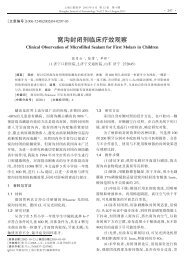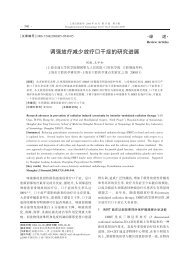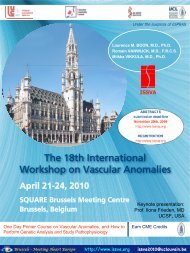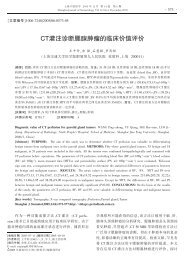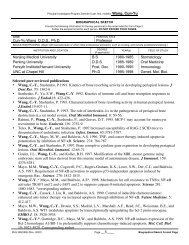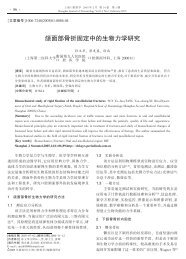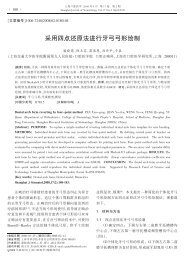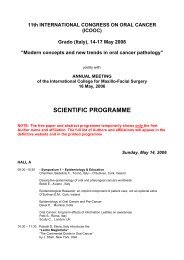core curriculum cleft lip/palate craniofacial anomalies
core curriculum cleft lip/palate craniofacial anomalies
core curriculum cleft lip/palate craniofacial anomalies
You also want an ePaper? Increase the reach of your titles
YUMPU automatically turns print PDFs into web optimized ePapers that Google loves.
Core Curriculum for Cleft Palate and other Craniofacial Anomalies<br />
b. Chromosomal testing may be indicated when CP occurs with other<br />
malformations, growth deficiency, or developmental delay.<br />
c. Molecular (DNA) testing is available for a very few specific<br />
conditions.<br />
d. Stickler syndrome is a common enough disorder that ophthalmologic<br />
evaluation of at-risk individuals is recommended.<br />
3. For CP alone, multifactorial inheritance is likely. Empiric risk for recurrence<br />
for unaffected parents with one affected child is 3:100 or 3%. This risk also<br />
applies to the affected individual’s own chance for similarly affected<br />
offspring. The risk is for an infant with CP alone, not CL+P.<br />
4. Prenatal diagnosis for CP alone is currently not possible.<br />
C. Non-<strong>cleft</strong> <strong>craniofacial</strong> abnormalities<br />
1. This group of conditions is highly heterogeneous and runs the gamut from<br />
disorders of unknown etiology with a negligible recurrent risk (e.g., amnion<br />
rupture sequence) to those in which single gene mutations play the<br />
determining role (most of the syndromic craniosynostoses) with a substantial<br />
risk for recurrence in some families. Since prognosis and recurrence risk<br />
information is specific to each condition, genetic evaluation is encouraged in<br />
this population.<br />
2. Prenatal diagnosis may be possible for a few conditions depending upon the<br />
etiology, the phenotype produced, and the availability of chromosomal and<br />
molecular diagnosis.<br />
III.<br />
Nursing<br />
The role of nursing in the care of patients/families affected by <strong>craniofacial</strong><br />
<strong>anomalies</strong> is multifaceted including education, case management, consultation, research, and<br />
primary care. Early intervention consists of assistance with infant feeding, access to team<br />
care, and family education. The nurse continues to interact with the family throughout all<br />
phases of the treatment period to assist them in understanding and complying with the<br />
recommended treatment plan, as well as providing crisis intervention and anticipatory<br />
guidance.<br />
A. Prenatal<br />
1. Assist with family education about <strong>cleft</strong>ing and other <strong>craniofacial</strong> disorders<br />
and team care after birth.<br />
2. Provide information about potential feeding issues.<br />
3. Introduction to Parent Support Network if applicable.<br />
4. Provide direct contact information for team evaluation.<br />
B. Neonatal<br />
1. Initial contact with newborn in birth hospital – discussion of newborn care,<br />
team care, and early <strong>cleft</strong> management, feeding, resources, support group.<br />
2. Modeling acceptance of child with <strong>craniofacial</strong> malformation.<br />
3. Ongoing follow-up of feeding and weight gain after discharge, directly or<br />
through consultation with primary care physician.<br />
16<br />
© 2004 American Cleft Palate-Craniofacial Association




